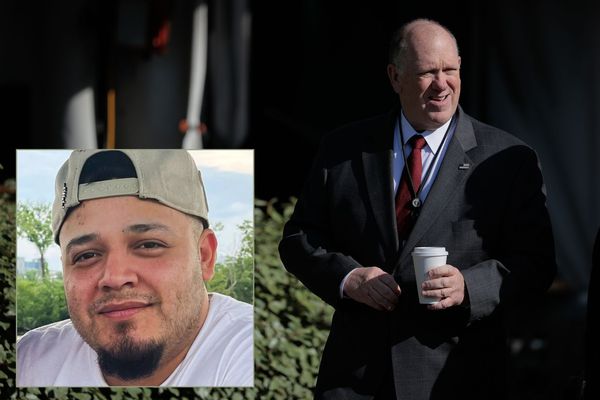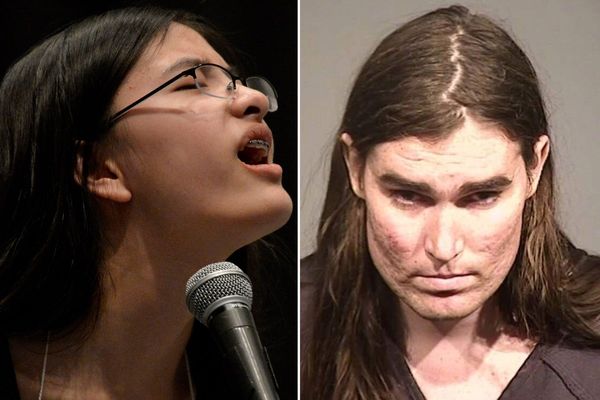
Michael Kauffmann, who has died aged 92, was a former director of the Courtauld Institute, a college of the University of London specialising in the study of history of art, conservation and curating, which also has an important collection, especially of French Impressionist paintings. He was a man with rare gifts. When he embarked on his career in the 1950s, he could hardly have foreseen that it would culminate three decades later in two heroic removal jobs – the installation of the Victoria and Albert Museum’s paintings, prints and drawings in the refurbished Henry Cole Wing, followed by the even trickier manoeuvring of 30 academics (not to mention a great collection and more than 200 students) into the Courtauld’s new premises at Somerset House in 1989.
The fact that Kauffmann, who was a curator at the V&A before becoming the Courtauld’s director, performed these tasks so efficiently, and with such spectacular results, is all the more remarkable given that he was primarily not an administrator but a scholar.
He had broad academic interests, covering huge areas of the art of the last millennium, but was above all a perceptive, rigorous historian of illuminated manuscripts from the period following the Norman conquest – when English painting achieved, as he put it, “the kind of undisputed international stature” perhaps not matched until the age of Constable and Turner.

Born Claus Michael Kauffmann in Frankfurt, he was the son of Tamara (nee Karp) and Arthur Kauffmann, who initially managed and then, from 1934, owned the Hugo Helbing auction house, and had commanded a battalion of the German army during the first world war. These impeccably patriotic credentials perhaps led the family to suppose that they could survive the rising antisemitism of the 1930s.
Eventually, they emigrated, just in time, to Britain: Michael was sent in 1938 to stay with his uncle and aunt, who had arrived the previous year, in Burnley, Lancashire; his parents arrived later the same year, with his elder brother, Sascha, settling in London. Michael attended Sunny Bank school, and then the Royal grammar school, Clitheroe, until 1943. He then moved to St Paul’s school, based temporarily in Berkshire, until it returned to London at the end of the second world war.
At Oxford, where he studied modern history at Merton College, he met Dorothea Hill, whom he married in 1954. Dorothy, as she was known, was, like her husband, an accomplished Latinist, and, as Kauffmann acknowledged, often helped him with difficult linguistic problems raised by medieval documents.
His postgraduate studies were at the Warburg Institute in London, where as a junior research fellow from 1953 to 1955 he pursued his doctoral thesis under the meticulous supervision of Hugo Buchthal. His topic – the 10 illustrated manuscripts of a 13th-century poem on the Roman baths at Pozzuoli, near Naples – may seem esoteric. However, it led to a model analysis of the complex relationship between text and image. Furthermore, Kauffmann was able to show how some of the illuminators not only drew from each other and from works in other media, but also, exceptionally for the time, represented the physical realities of their subject, the ancient spa itself.
After a brief stint as an assistant keeper in the photographic collection of the Warburg, in 1958 Kauffmann began his curatorial career at Manchester City Art Gallery, from which two years later he moved to the V&A, where he was to spend the next quarter of a century. This environment was to have a crucial effect on his scholarship, much of which was devoted to the museum’s own collections: as a consequence, his themes ranged from late medieval images of flagellants, 11,000 virgin martyrs and the apocalypse, to landscapes by John Constable and John Varley.
However, his greatest academic achievement in this period was a survey of Romanesque manuscripts, 1066-1190, published in 1975. This combined an exhaustive study of iconography and artistic styles with a consideration of the books’ ecclesiastical patrons and their mysterious illuminators, who by this time would mostly have been laymen rather than monks.
As so often in Kauffmann’s writing, an exciting sense of the artistic process, its richness and variety, emerges from the minutiae of his discussion. Only when he turns to the depiction of drapery – “damp fold”, “clinging curvilinear”, “multilinear”, even “nested V” – does he, probably unavoidably, adopt the jargon of his trade. Otherwise his style is a paragon of plain English.
Certainly Kauffmann did not wish to speak solely to a narrow circle of medievalists: The Bible in British Art, an exhibition that he curated at the V&A in 1977, began with the Anglo-Saxons and finished with David Hockney and Oskar Kokoschka, while in 1984 another show, with which he was heavily involved, brought English Romanesque art into the limelight of the Hayward Gallery.
This event coincided with Kauffmann’s final year at the V&A, where from 1975 he had been keeper of the museum’s paintings, prints and drawings – a collection larger than that of the National Gallery, if less renowned.
Having completed his department’s triumphant move into the Henry Cole Wing, Kauffmann took up the directorship of the Courtauld in 1985. This must have seemed a poisoned chalice. With all his administrative experience and wide expertise, he was asked to manage a coterie of eccentric specialists, sometimes only vaguely aware of art outside their periods and usually distinctly lacking in practical skill.
Moreoever, Kauffmann had inherited from his predecessor Peter Lasko the task of transporting the whole school from its exquisite goldfish bowl in Portman Square – the Courtauld’s original home – to a much larger, if less atmospheric, property at Somerset House. Inevitably, some of the shubunkins shook their fins. Others, especially among the non-academic staff, greatly contributed to the venture’s success in 1989, which allowed the institution’s student numbers almost to double by the time of Kauffmann’s departure six years later.
In addition to all his other duties, Kauffmann was an approachable if somewhat grave teacher, his comments always forthright but balanced, his famously tiny handwriting as immaculate as any Romanesque script.
Unsurprisingly, he seized his retirement as an opportunity for more research, producing in 2003 the monumental Biblical Imagery in Medieval England, 700-1550, a characteristically authoritative treatment of the iconographical issues that had fascinated him throughout his career. This was followed, in 2017, by Eve’s Apple to the Last Supper: Picturing Food in the Bible, as well as by numerous reviews and even the odd obituary. A kind, hospitable man, he was a scholar whose humanity and breadth of interests touched many people.
Dorothy died in 2009. He is survived by his two sons, Francis and Martin.
• Claus Michael Kauffmann, art historian and curator, born 5 February 1931; died 30 June 2023







